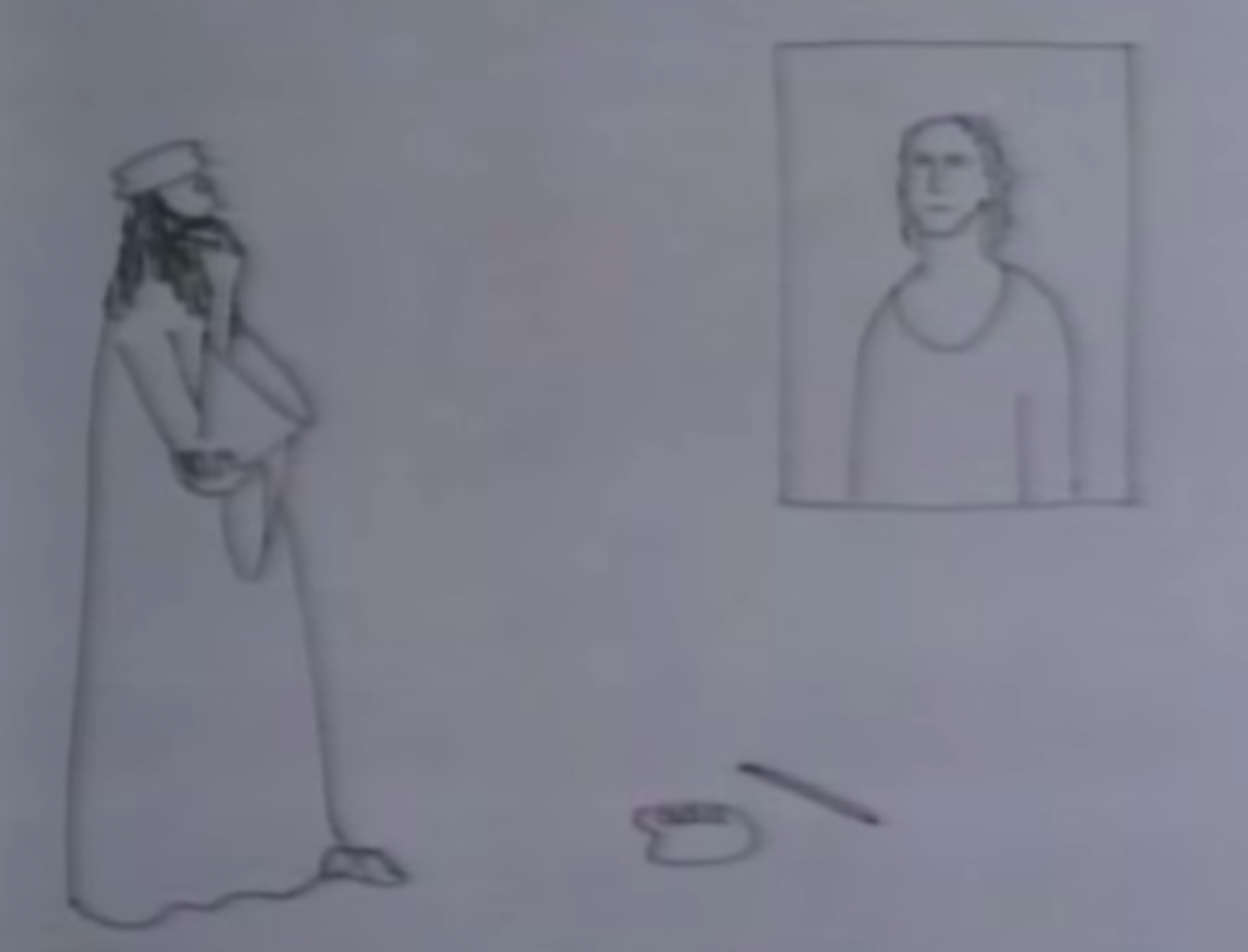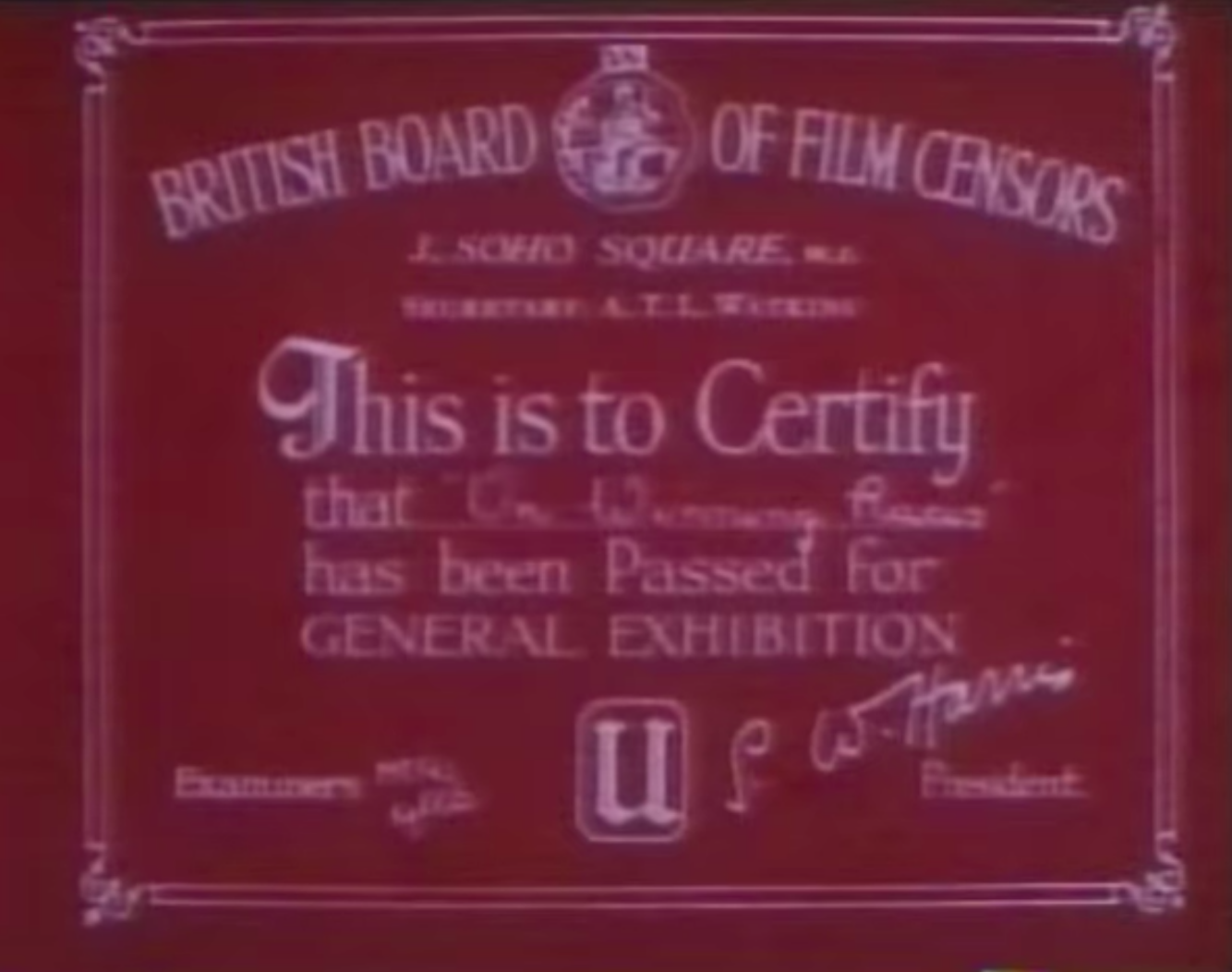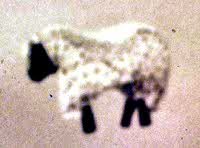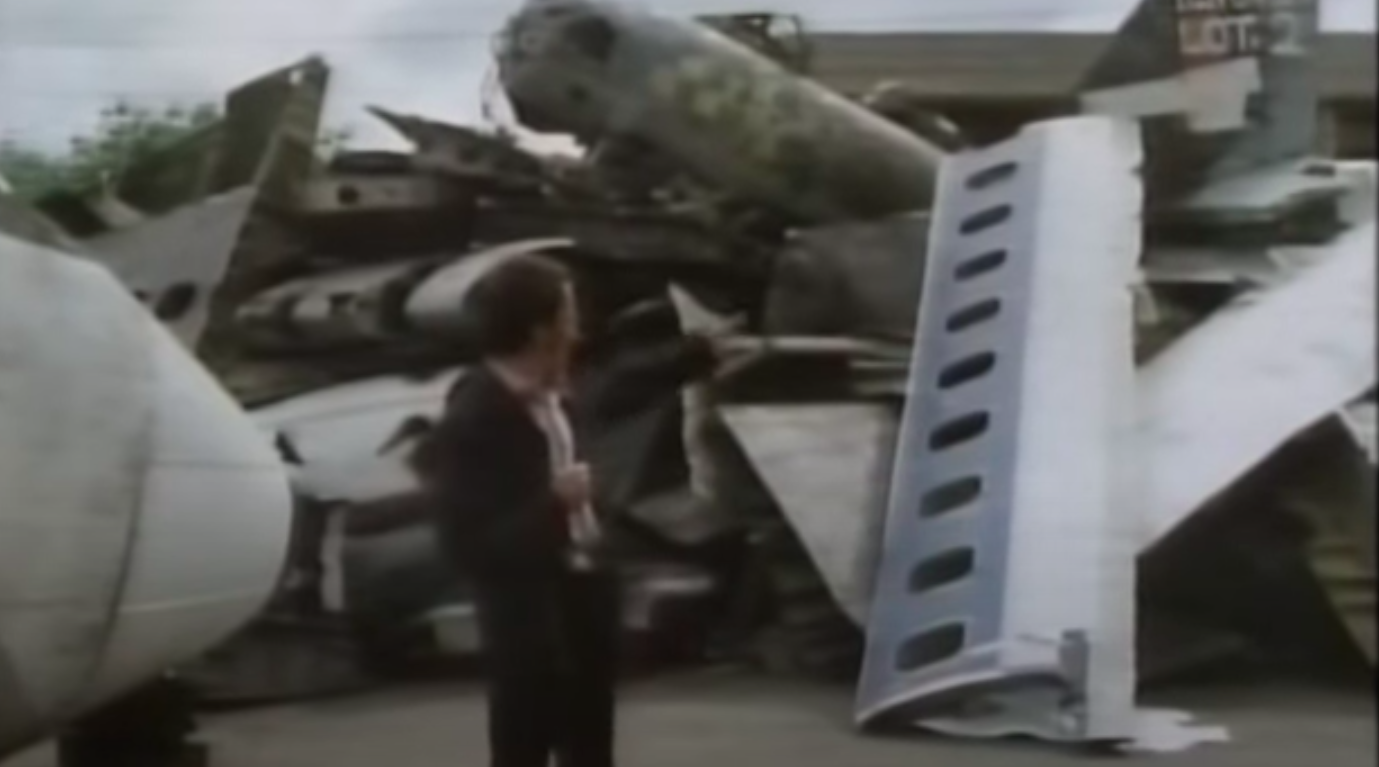
Why things go wrong?
Tim Hunkin
1982

My name is Tim Hunkin. I am trained as an engineer but I now write and draw a cartoon strip for The Observer Sunday paper. I take a different subject each week and pick eight or ten facets of it, usually with a slightly engineering bias. I also make mechanical sculptures; sort of three-dimensional cartoons. This one's called the zoo and it's supposed to be an animal's eye view. Some of my sculptures are made for particular sites and others like this one go on tour and art galleries and fairs. I get great satisfaction from building machines that make people laugh. The frustrating thing is that, like all other machines like cars, pocket calculators, and even planes, they can go wrong.
This is the sort of trouble I have. People feel cheated if machines doesn't work. So this program is rather a personal look at the subject drawn partly from my own experience with machines and partly from facts I've picked up while researching the Rudiments of Wisdom cartoon. It's divided into five parts. First has a bit about Victorian machinery and how it probably wasn't any more reliable than machines are today. Second, how engineers tend to be intensely conservative about design to make machines more reliable. Third, there's a section about testing and how it often doesn't prove the reliability of new components. Fourth, there's a bit about airplanes and things that need to be totally reliable and last, there's a bit about the perils of fiddling with machines.
Steam engines are very impressive. You can see what every part does just by watching it. However, the ones that survived were among the best machines of their time. The unreliable and badly made ones have all disappeared. Even the ones that look most impressive can have their problems. A large engine, affected by damp, can take a half a dozen men over an hour to get it going. Just because the machine is made to last forever doesn't necessarily mean it's reliable. This machine has been unreliable for 70 years. It's solid enough to go on being unreliable for another 70. An important difference between Victorian machinery and machines today is the degree to which they can be repaired. In the early 19th century, most machines were repaired by local craftsmen making their own replacement parts where necessary. Farmers have continued this tradition until recently.
As machines became more complicated, parts became interchangeable, and firms started selling spares to be fitted by local tradesmen. If something like this adding machine broke down, spare parts would always be available to repair it. A modern plastic calculator would simply be thrown away. Replacing one is cheaper than repairing it. It's a consequence of modern assembly techniques. Gluing parts together is cheaper than using nuts and bolts. It doesn't necessarily make things less reliable; it just means they have a limited life. Plastics almost impossible to repair so there's no point in making the other components last longer than the plastic ones. Today it limits the life of even the most expensive machines. But immortality is not always good engineering. A more practical idea is this; all the parts are designed for the same, limited, life.
Another principle of good engineering is to build on your own past experience. With this machine I didn't. It's called The Queue and it lives outside a bakery in Neal's Yd, Covent Garden. As an experiment I used silicon chips for the timer. It doesn't always work well as expected. The time is not reliable. It's probably my lack of experience with electronics. I've since become more conservative and I now use more traditional timers.

On one disastrous occasion they forgot to empty the coins. The coins piled up so much that they fused all the circuits. The principle of using units you've used before and that you know work is widely applied to make machines more reliable. The car is a good example. A new design of car uses at least 90% of components already tried and tested on previous models. The layout and major components have changed little since 1905. The petrol engine is the development of Gottlieb Daimler. The radiator water cooling system was first used in 1896. There's also a Ackermann steering (1818), the differential patented for tricycles (1885), William Maybach's carburetor (1893), and the Bosch spot fog ignition (1893). In fact if you take the rest of a car in this way, you find the most of the parts are simply improvements on the originals. This conservative attitude to design has led to cars which are quite efficient and reliable but boringly similar to each other. It's often said that if as much money had been spent on the development of the steam engine as we've spent over the years on the petrol engine, it could be at least as efficient and convenient. It would certainly have a lot cleaner exhaust.
The APT (The Advanced Passenger) train is an example of trying to change too much. Almost every components are new and designed from scratch. However, the lightweight gearbox is overheated, the brakes kept seizing getting power to enough wheels was difficult, and of course the famous tilting system jammed. After 10 years development much of this innovation may now have to be scrapped before the trains reliable enough to go into service.

This may turn out to be my version of the APT. It's a combination of a lot of things I've never attempted before. It's a water clock but I and my partner Andy Plant finished in June for a shop in Covent Garden. This tube shows the minutes with a rising float. We've had some trouble maintaining a constant flow. On the hour, when the tubes nearly full, an electric timer empties it. Simultaneously the water is released from a separate tank on the roof. The water operates the bells and also the figures at the bottom. As the water level in the troughs Rises plastic flowers come up on floats. There are also other surprises. Neither Andy nor I have made anything like this before. We've had to go back a few times since it was installed to sort out teething problems we don't yet know if the whole thing will keep getting clogged up with dirt the dust from the building site next door hasn't helped. We don't yet know how long the bearings will last and we're not quite sure what will happen in winter. We thought about a antifreeze but our current scheme is to fit an immersion heater in the tank on the roof.
Before we install it we tested the whole system out on the side my workshop. We found we could reduce the splashing by fitting baffles to the cups that ring the bells and rubber tubes to the watering cans. We found out lots of problems. Testing it out like this was extremely valuable.
Before being put into a machine, any new components are thoroughly tested under extreme conditions that it wears out. Tests aren't always reliable. One of the commonest reasons why they fail is the so called human factor. A good example is quick drying high alumina cement. After years of exhaustive testing, by the mid seventies, it was widely used in prestressed roof beams. Several of these have collapsed. The problem was that, in hot weather, if slightly too much water was mixed in a slow chemical reaction occurred which eventually destroyed the strength of the concrete. In practice it was easier to pour the concrete when he was slightly too runny. The designers didn't anticipate and test how the contractors would actually use the stuff. Testing the life of materials, particularly ones that have to last a long time, is always difficult. The long-term safety of storing radioactive nuclear waste, for example, is almost impossible to test.

Paints are interesting example that's very difficult to test. Pigments mixed with linseed oil are amazingly permanent. During the Renaissance, when they were first used, no one could have known this. Leonardo was a great experimenter. Many of his paintings have been lost because he experimented wildly using resin, wax, tar, urine, and even insects. We're probably quite lucky that any of his famous work has survived at all. Acrylic paints are now widely used instead of oils. No one can yet be sure how long they'll last. They've only been around for 20 years but the chances of success are pretty good. Almost all the pigments are the same as those used in oil paints and some like sepia yellow, ochre, and vermilion have been around since Roman times. Only the medium acrylic resin is completely new.

The dyes used in color films and snapshots certainly deteriorate. This promotional film from 1952 was once full color. Now it's almost all faded except the magenta. Most film archives are now kept in cold storage to slow down this effect. This tissue paper sheep is probably the most difficult thing I've ever had to test. The talcum powder stops the paper sticking when it's folded. It's one of 300 commissioned by the Pink Floyd pop group for their 1977 American tour. The sheep is loaded into a cardboard shell and fired in the air by a gunpowder charge. I hadn't tried one out since they were made and I wasn't sure if it would still work. The prototypes were ridiculously difficult to get right. Not only did the sheep catch fire or fall in the marsh, there was often too little of the shell left afterwards to work out what had gone wrong. It took three months to get them completely reliable.

The aircraft is a good example of something that can't be allowed to go wrong. It is actually wonderfully safe. This isn't a plane crash, it's a scrapyard. They're mostly bits of 707 over there with a hunter on the top there. I love scrapyards and they're actually quite good places to see how planes are made. All aircrafts are designed to be failsafe or to use the technical jargon; damage tolerant. For example, there are joysticks, two sets of control wires, and a lot of the wiring is duplicated. For all the essential systems there are backups but this isn't infallible. For example in the DC-10 crash in Paris, when the cargo door fell off, the cabin floor collapsed and this severed not only the main cables also the backup cables as well. When all the parallel systems fail at the same time this is called a common mode failure. It's usually fairly disastrous.

One way of preventing this is to build in different systems that work in different ways. For instance electric power that come from generators driven by the engine can also come from the hydraulic system and it can also come from batteries all at the same time. Since the DC-10 crash, the control lines now have to travel by different routes to those of their backups. It's an attempt to avoid a common mode failure. Even this is not infallible. Dead chickens are used in a series of tests designed to find out what happens when a plane in flight hits a bird. Bird strikes can be a major hazard especially on takeoff. A pre-packed bird is loaded into a compressed air gun and then fired at different parts of the airframe, for example, the pilot's windscreen. A common mode failure can happen when a flock of birds stops all the engines at once which is rate. Usually at least one engine can be restarted and all modern airliners are built to keep flying on just one.
My most reliable machine is in Carnibal Street. It's nowhere near the same standard as an aeroplane but it does use the same principle of having backup systems. It's a water-powered sign for shop called Cascade and is supposed to operate continuously for 12 hours a day. The complete thing is 24 foot wide. We tried to make it quite simple. There's an independent mechanism for each of the eight fishes. There are six separate pumps so even if a pump or a fish stopped working the rest will carry on and the failure will hardly be noticed. This burning desire to make the thing reliable is not thtough only great level of craftsmanship. The less it breaks down, the less we will be called out to repair or maintain it.
With airliners, on the other hand, regular maintenance is essential for safety. A traditional technique, used to ensure the reliability of planes, has been to assign a life to every component. At the end of the rated life it will be changed although it almost certainly still be working perfectly. Every time the plane came in for maintenance, a few parts would be replaced like heat exchanger. However it's obviously expensive and wasteful changing perfectly good parts. A new method of maintenance is taking over. It's called condition monitoring. Various test circuits and procedures are designed into the plane. In the engine the turbine blades are inspected with an optical fiber device called a borescope. Oil filters are examined to see how many fragments of metal have worn away. The idea is that you run through these tests every 500 flying hours and leave everything alone unless one of the tests reveals that something needs doing. The engines are also run up to speed on the ground. A lot of information about their condition can be deduced by careful analysis of their temperatures and pressures etc. Engine vibration is also measured. All these recordings can give some indication of parts beginning to wear.
McDonnell Douglas who make DC-10s like these sell the concept with the catchphrase, "If it ain't broken, don't fix it." Condition monitoring has the disadvantage that some faults may miss. Many parts of the airframe are inaccessible and can suffer from metal fatigue without being noticed. However, since the early comic disasters, they're remarkably few examples of this.
Condition monitoring has another advantage. It's often best to leave things that are working perfectly well alone. Any repair runs the risk of introducing a bit of dirt wearing the thread of some vital nut or forgetting to replace some vital part. In the past aircraft accidents have almost certainly been caused by this kind of fiddling.
The principle of leaving well alone can be useful. There are many mechanisms in my machines which ought not to be reliable but which have withstood many thousand operations. The glass is shot along the bar by an old spin-dryer motor underneath. When his hand reaches the end of its track, the motor stalls. I was expecting this to burn out the motor but it hasn't, so I've left it alone.
I think this fiddling is why many vehicles become unreliable. When one thing goes wrong, a lot of damage can be done searching for fault. Many bits and pieces are disturbed and never work properly again. A knocking noise which started coming out of my transit a little while ago is a good example of this. A local mechanic convinced me that the noise was coming from the differential gear. I replaced it with a differential from a scrapyard but still the noise remained. After further conversations with the mechanic I decided the fault must be in one of the universal joints. I replaced both of them but this made the noise worse then I noticed the bulge in a tire. This turned out to be the source of the original noise. Having replaced that I was still left with the second worst noise. After fitting yet another differential to no avail, I finally cured it by having the prop shaft rebalanced. Unfortunately I've forgotten to put any oil in the new differential.
I don't want to imply that I want you do nothing to a car until it breaks down. Listening for noises, watching the exhaust, and looking for oil leaks can all be valuable forms of condition monitoring. However I suspect that extensive DIY repairs can reduce the long-term reliability of cars. A recent witch survey found that among cars over six years old, Volkswagen Beetles were much the most reliable. I now wonder whether this might be due to their policy of discouraging the supply of parts and repairs by DIY mechanics. Unfortunately the flaw in this theory is the garages are often just as bad doing just as much damage searching for a fault. I don't think there's any solution.
Perhaps Victorian machines, despite their indestructibility, weren't any more reliable then machines today. Conservative design, though boring, has at least made cars more reliable. Testing is not infallible. A hundred percent reliability is almost attainable and fiddling should be avoided at all costs. Making machines has mixed blessings; it's very satisfying getting them to work but they'll never be totally reliable. I sometimes fear I'll end up as a perpetual touring mechanic fiddling with my life's work. Machines are a source of both inspiration and frustration.